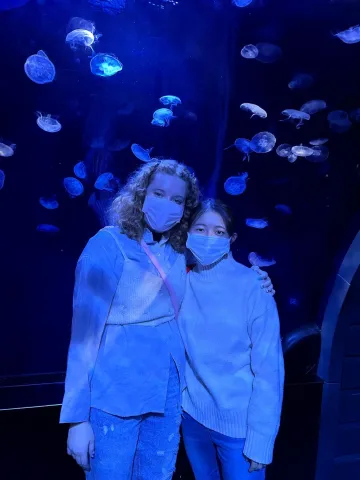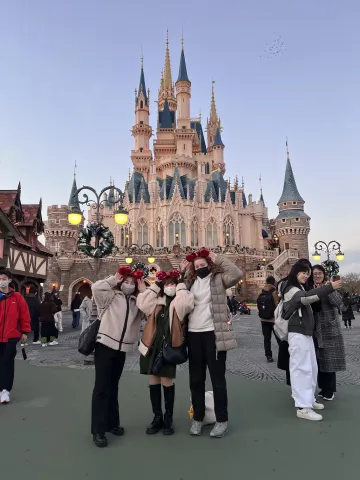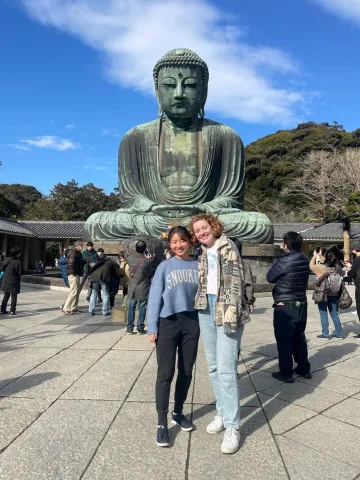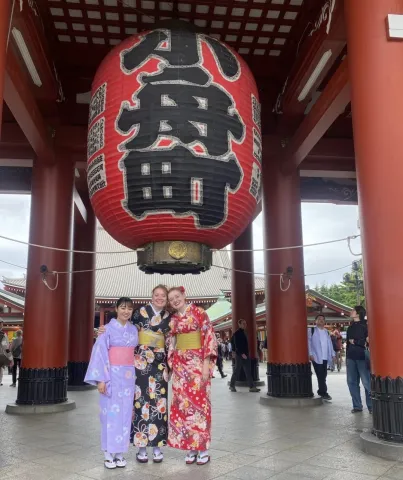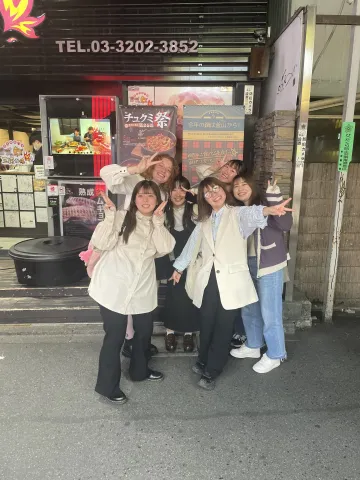Gakushuin Women's College
Gakushuin Women's College
Important Information:
- Semester Dates:
- Session I: April - August
- Classes: April - July
- Session II: Mid-September - March
- Classes: September - January
- Session I: April - August
- Language of Instruction:
- Japanese
- Website:
- Homepage
- For further information, visit the International Centre for Students at the University of Lethbridge in SU060 or email us at outgoing@uleth.ca
Japan's population is over 126 million. Most Japanese reside in densely populated urban areas. Japan's capital city is Tokyo. The population of the Tokyo Metropolitan Area including the city, some of its suburbs and the surrounding area is approximately 12 million.
Basic English is widely spoken throughout the country, particularly in major cities and tourist centers. Announcements on public transportation are frequently made in both Japanese and English, and signs generally include decipherable roman characters or an English explanation.
In Japan, there are many fascinating places that you can enjoy for free. These include such diverse attractions as beer museums, food galleries, hi-tech consumer electronics showrooms, cosmetics factories and television studios. With so many different places to visit there's bound to be something of interest for everyone.
Traditional cultural pursuits such as sado (Japanese tea ceremony) and ikebana (flower arrangement) are much more than simple pursuits in skills. They embody spiritual ways seeking the traditional values of wabi (elegant stillness) and sabi (antiquated elegance with calm).
Tokyo is Japan’s capital and the world’s most populous metropolis. Prior to 1868, Tokyo was known as Edo. A small castle town in the 16th century, Edo became Japan’s political center in 1603 when Tokugawa Ieyasu established his feudal government there. With the Meiji Restoration in 1868, the emperor and capital moved from Kyoto to Edo, which was renamed Tokyo (“Eastern capital”). Large parts of Tokyo were destroyed in the Great Kanto Earthquake of 1923 and in the air raids of 1945. Today, Tokyo offers a seemingly unlimited choice of shopping, entertainment, culture and dining to its visitors. The city’s history can be appreciated in districts such as Asakusa, and in many excellent museums, historic temples and gardens. Contrary to common perception, Tokyo also offers a number of attractive green spaces in the city center and within relatively short train rides at its outskirts.
Gakushuin Women’s College is a small liberal-arts college for women located in central Tokyo. Its departments of Japanese Studies, Intercultural Communication and English Communication together make up the Faculty of Intercultural Studies. There is also an M.A. program that accepts men as well as women. The mission of the college is to provide students with a profound understanding of Japanese culture and the ability to explain it abroad, as well as with a good understanding of the world beyond Japan, and the ability to express their opinions persuasively. The college began as a school for the nobility, and thus has teachers of the highest caliber for the Japanese traditional arts. Field trips to the theater and to historic/scenic sites are organized for the international students several times each year.
- At over 5,000 square miles, the Greater Tokyo Area is the second largest metropolitan area on the planet in terms of urban landmass. In terms of population, it comes in at #1.
- Founded as Edo once upon a time (in the 12th century), Tokyo’s literal translation means “East(ern) capital.”
- With an average of 3.64 million people passing through daily, Shinjuku Station is the world’s busiest rail station, according to the Guinness World Records. The streets of this district see their fair share of traffic as well.
- Five million pounds of seafood, worth roughly 28 million USD, are sold daily at Tsukiji Fish Market (a complex that covers 57 acres).
- In 1962, Tokyo became the first city in history to record a population greater than 10 million, making it the largest city in the world at the time.
- Tokyo contains over 100 universities and colleges, giving it the world’s highest concentration of higher learning institutions. One-third of Japan’s university students attend school in Tokyo.
- Over 90% of the Japanese population buys a comic-magazine daily. Manga (Japanese animation) is more than 80% Of Japan’s Book sales.
- Sumo is the national sport in Japan. Most Rikishi (Sumo professional wrestlers) weigh an average of 160 kg, and up to 250 kg.
- Shibuya: The most famous district in Tokyo. Fashionable, colorful street, that never sleeps. The crossing is one of the busiest in the world – as the traffic lights change people from all directions cross the street. A must-see in Tokyo, the shopping mecca and simply a very exciting place to be.
- Cherry Blossom Festivals: Cherry blossom is a symbol of Japan. The blooming trees mark the end of the winter and welcome spring, which is being celebrated all around the country. In Tokyo alone there is a number of parks, where the blossoming trees attract locals and guests to admire the incredible trees. The flowers are expected to blossom from March 20 to April 8, however the dates may slightly change.
- Shinjuku Gyoen National Garden: this garden is one to admire and meditate the beauty of nature. It has many separate themed gardens, like French, English, traditional Japanese and more. It becomes especially striking during the cherry blossom season.
- Ryogoku Kokugikan: Tokyo’s National Sumo Hall is another spot where tourists can have their authentic Japanese experience. Besides actual wrestling there is a whole parade in the ceremonial clothes, classic move demonstration by the former champions that create a real sumo feast.
- Cat Café, Nekorobi, Ikebukuro: The cozy café is occupied by the cats. The pet lovers will be pleased to visit this place. Anyone who loves pets, but can’t keep them, who wants to pet a cat or simply have a cup of tea in a tranquil place, might love to come to this unconventional café.
For detailed information about vaccination recommendations when going abroad, please visit the Government of Canada's website.
A women's dormitory for international students is located within a 20-minute walk from the campus. Accommodating 12 women in 6 suites, each with its own cooking facilities, the room charge is ¥38,000/month with an initial ¥20,000 non-refundable deposit. Apart from the dormitory, rooms are available in the International Student Village, just a short subway ride away. Homestays may be arranged at ¥60,000/month, which includes breakfast and dinner.
Transportation
Students are responsible for the cost of airfare to and from Japan (Approximately $1500.00 - $2000.00 return) but may be eligible for scholarships to help with the cost of travel.
Arrivals are either at Narita International Airport or at Haneda International Airport. From there you can take a shuttle bus to Shinjuku Nishiguchi Bus terminal for 3,100 yen from Narita Airport (ca. 90 mins.), or 1,230 yen from Haneda Airport (ca. 60 mins.).
Health Insurance
Non-Japanese students with a Visa are allowed to become members of the National Health Insurance system while they reside in Japan and are strongly advised to do so. After you have joined the system, initial charges for treatment and medication will be reduced to 30% of the amount due at the clinic or pharmacy after you have presented your proof of coverage. Monthly premiums are about 1,000 yen. (ca. 12.5 CAD)
Please note: The insurance incidental to the International Student Card is not widely known in Japan and will not be accepted at hospitals in Japan.
For a detailed description of the Japanese Health Care System, please click here.
Summary of Approximate Expenses
|
Airfare |
CAD 1,500-2,000 |
return |
|
Rent |
Dormitory: ¥ 38,000 |
per month |
|
Health Insurance |
¥ 1,000 |
per month |
Canadian Citizens require a visa to study in Japan.
Visit the Embassy of Japan in Canada website for information about the criteria for visa issuance as well as the application process.
Student Photos
